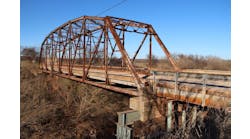The New Jersey Department of Transportation (NJDOT) has announced a proposed $4.9 billion capital program for the fiscal year 2016 that directs $2.8 billion toward NJDOT and other agency investments and $2.1 billion toward statewide transit improvements.
“This proposed program will enable NJDOT and NJ TRANSIT to move projects forward that improve our state’s aging infrastructure and provide funding for counties and municipalities to address local transportation needs for one more year,” NJDOT commissioner Jamie Fox said. “However, our infrastructure is in disrepair and our Transportation Trust Fund is running out of money. We must identify a reliable, dedicated revenue source for the Transportation Trust Fund.”
The proposed budget focuses on safety, mobility and asset maintenance, along with projects such as the Pulaski Skyway rehabilitation, the largest project in the state, and Local Aid grants to counties and municipalities aimed at eschewing the lean on property taxpayers.
The $4.9 billion program includes $1.6 billion in state funds, which is commensurate with FY2014, and $2.3 billion in federal funds—an $800 million increase, which supports a $1.9 billion NJDOT capital program and a $2.1 billion NJ TRANSIT program. Another $950 million in Port Authority of New York & New Jersey projects—a $335 million increase—included for federal reporting purposes, raises the total proposed FY16 capital program value to $4.9 billion, but these projects are not administered by NJDOT or NJ TRANSIT. From the $1.6 billion in state funds, NJDOT will receive $1.1 billion and NJ TRANSIT $504 million. From the $2.3 billion in federal support, NJDOT will receive $774 million, while NJ TRANSIT will receive $1.56 billion.
Among the projects expected to be funded through the budget are:
- $310 million toward the Rte. 35 reconstruction project on the Barnegat Peninsula in Ocean County, which is expected to be completed this year;
- $900 million toward the Direct Connection project in Camden County to improve the interchange of I-295 with I-76/Rte. 42; and
- $200 million toward the Rte. 3/Rte. 46 Valley Road and Notch/Rifle Camp road interchange, which is expected to begin this spring.
The number of NJDOT-owned structurally deficient bridges has been reduced via previous investment from 330 in 2010 to 290 at present, or 11% of the 2,586 bridges owned or maintained by NJDOT. However, despite marked bridge projects such as the $1 billion Pulaski Skyway rehabilitation project and the $700 million Rte. 7 Hackensakc River Wittpenn Bridge project, Commissioner Fox went on to state before a Senate hearing this week that Gov. Christie’s budget does not entirely address those 290 bridges in need of immediate attention and repair.
“The amount we’re spending annually now ($1.1 billion) will not allow us to catch up,” said Fox, who estimated the cost of fixing bridges at between $1.8 billion and $2 billion. “We’ll need an increase to our budget just to do the backlog of bridges that need to be repaired. It will take a number of years to catch up, especially on the bridges.”
Fox expressed further concern that overall funding amounts are merely a repeat of the previous year and that one-time revenues are simply not sustainable threads of dependable dollars. “This short-term fix is anything but ideal,” Fox said. “As of July 1 of next year we will have hit a wall. There would have to be drastic cuts” without new revenue being sourced.
Coupled with a harsh winter that has had crews addressing thus far more than 180,000 potholes, with 300,000 more in the imminent offing, the high and low of the Christie budget seems typical of any wide-ranging and much-debated funding initiative: two steps forward, one step back. Still, legislators seem to be working toward common goals, which has provided a vein of optimism that a sustainable solution can be wrought.


